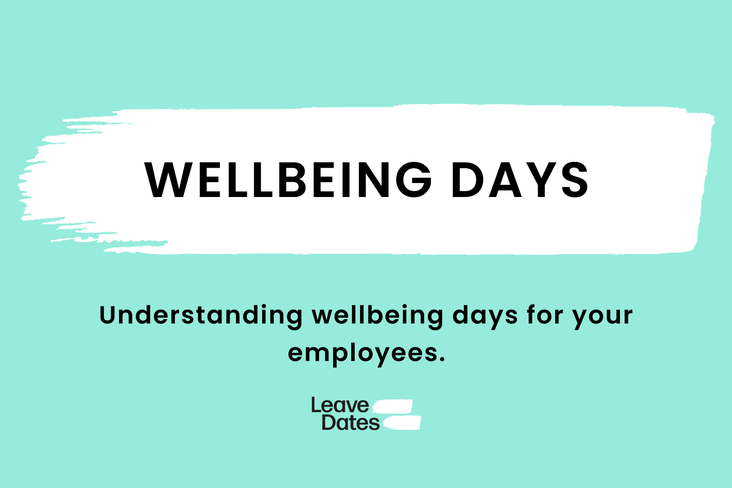
In this article
No, we’re not talking about slowly creeping into the office at 11am with a *slight* hangover, or easing yourself back in gently after a holiday in order to “readjust” (though both totally legit concerns in our eyes). A phased return to work (PRW) is where an employee who has been absent for a prolonged period – typically due to illness, a sabbatical, or parental leave – staggers their return to work rather than jumping straight back in full-time.
This compassionate and supportive approach to easing people back into work helps to create an inclusive and accessible workplace. This is a top priority in the post-pandemic world that values health as well as wealth, and where flexibility is a core value and high on prospective employees’ wish lists.
Who does this apply to?
Typically, PRWs are granted to employees who are expected to require a period of adjustment to settle back into working life. This is often due to major life events or changes, such as recovering from a serious mental or physical illness, adapting to life with a chronic illness or disability, or a big change in their personal life.
Some examples of situations where a PRW can be helpful are:
- Someone has taken several months (or longer) off work to have treatment for a serious illness, eg cancer
- An accident means a person has a new physical disability to navigate
- Someone has been diagnosed with a chronic condition that affects their energy levels and physical/mental capacities
- Someone is recently bereaved and easing back into ‘normal’ life
- A new parent is dipping their toes back into work while still fulfilling a caring role at home
- Someone has been on study leave, or working elsewhere (perhaps abroad) for a while
A phased return can take place over any timeframe the employee and employer decide on. It will depend on what is right in each situation, but should be agreed on upfront.
The role of occupational health
A PRW can be offered by an employer or requested by the employee. This could be (but doesn’t have to be) on the recommendation of their GP or occupational health practitioner (OHP) via a ‘fit note’; if needed, the employer can make the referral to occupational health.
In the UK, occupational health plays a critical role in promoting and maintaining the physical, mental and social wellbeing of employees in all professions. It seeks to prevent work-related illness/injury and protect health. From hazard assessments to advice on ergonomic design, for any business truly committed to their staff’s health and wellbeing, OH will be a big part of the day-to-day.
In terms of their role in phased returns, when a referral is made, the OHP will meet with the team member to discuss their situation and concerns. They will carry out an evaluation to identify whether the person is fit to return to work and on what basis, as well as any accommodations that need to be made. This will include talking to line managers and the team the person works within, as well as various health and safety assessments. The OHP will then write a report that both employee and employer must receive a copy of.
What’s the benefit?
There are lots of benefits to a transitional approach to bringing people back into the workplace after extended absence or a big change.
For the employee, they will feel supported, valued and like they are truly wanted at work, not just for their time and direct contribution but because they are seen as an integral part of the business for the long-term. Being able to return in a way that feels doable not daunting helps to foster a positive mental attitude, guiding the employee to focus on what they can do instead of what they can’t. This can help them to look to the future with optimism, energy and a sense of purpose. In the case of illness (mental or physical), it might even speed up their recovery.
Financially, there will also be a benefit if phased return enables someone to return sooner; financial stability, or just the removal of money concerns related to their absence, may further improve the employee’s general wellbeing and thus ability to work.
For the employer, they also benefit from the positive work environment that this supportive approach helps to create, and the strong employer–employee relationship that results. Most notably, this results in greater retention and thus lower turnover, which comes with big cost savings (in terms of recruitment and training).
If an employee is allowed to transition back to work gradually, this may result in them returning sooner than if they had to come back full-time. This will save money on paying for cover, even if only part-time.
By contrast, refusing to allow or consider a PRW could result in a person simply quitting instead of trying to return. Or it could mean an unsuccessful transition back to work, where they become overwhelmed or unwell and either resign or are dismissed. This is a poor outcome for everyone – the employer, the employee, their colleagues, and also customers/clients.
Now that we can clearly see the value of phased returns to work, how can we action them?
Process & policy
The PRW process should be outlined within your sickness and/or other absence policy. Also include it in a staff handbook, if you have one. A clear policy ensures both clarity and consistency in use, and should set out:
- When a PRW is an option
- The process of requesting a phased return
- What the employee can expect
- How they will be paid over this period
What the ‘phases’ of the return look like will vary for different people and situations. It’s not always coming back part time and building back up to full time. It might be shorter days (later starts/finishes), or different shifts (eg no nights), for a set period of time. It could mean coming back one day a week, or four. Maybe they want to work full-time, but from home for the first few months.
In the case of a person recovering from stress-related burnout, it could be less responsibility for the first couple of months. Maybe they’d prefer longer-deadline work and/or a non-customer facing role. It might mean less physically strenuous tasks (eg, no lifting) for those still recovering from injury. Breastfeeding mothers might need to alter their start/finish times to accommodate feeding schedules. Neurodiverse employees may benefit from a quieter environment.
The key is to talk to the individual concerned, and for both sides to make their expectations and limitations clear. You’re looking for a win–win that meets the needs of the individual and the business – this can’t be achieved if those needs aren’t voiced.
The phased return should have a clear step-by-step timeline with defined objectives and ‘milestones’ for progression through the phases, aligned with business needs and the employee’s wellbeing. Regular check-in points will help to ensure the plan is still working for everyone and that the employee is feeling good as things ramp up.
No one left behind
If someone is returning from a prolonged period of absence, you should treat their return as not dissimilar to onboarding of a new hire. Things evolve at a remarkable pace these days, especially in tech-heavy industries, and it’s likely that many things will have changed since they were last in the workplace.
Consider whether, beyond a refresher on the key elements of their role, current projects, clients and priorities, they might need some additional training? Are you using any new software? Are there any new members of the team they should be introduced to?
Ongoing support and check-ins are essential. Even if not much has changed at work, a lot might have changed for that person. They could be newly qualified or upskilled. They might be a new parent, or recently bereaved. They may have received a life-changing diagnosis, or suffered an injury. For someone adjusting to a new life or body, even the most familiar and/or static of workplaces could suddenly feel alien. You want to make that space feel like a home from home, as quickly as possible.
Phased return to work and pay
As employees aren’t working their regular hours, they won’t be receiving their regular salary. So how does a PRW impact pay?
Typically, pay would be worked out on a pro rata basis depending on the hours or days worked. So if they return on 50% of their usual hours, they could expect 50% of their usual pay. At the more generous end of the spectrum, some companies will give full pay even while a person works fewer hours, to make things extra easy for them. Sitting somewhere between those two options, some companies use accumulated leave to top up wages before the person is back to their full capacity.
As ever, there’s a balance to be struck – in this case, between fair compensation and a smooth return to work. This should be talked about early on, so no nasty shocks!
Key takeaways
It’s clear that phased returns to work are a great way to get people back into work after life-changing events or a long absence. It helps them to transition more easily and, perhaps, sooner than they would otherwise. This is great for business and the economy more widely, as it’s a net positive for productivity. It’s also a win for inclusivity, removing barriers that could put people off work when their confidence has taken a knock or they have new limitations to deal with.
‘Accommodate’ is the key word here, followed closely by ‘communicate’. Your role as the employer is to make it as easy as possible for the returning employee to get back to where they were (or to something new that works for all). Whether it’s new tech, a different work environment or a more flexible work pattern, the idea is to show that you not only want them back but you want them to enjoy it!
The unspoken choice is often between a phased return to work or no return at all – be sure to choose the right path for you and your staff.



